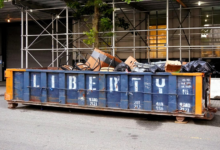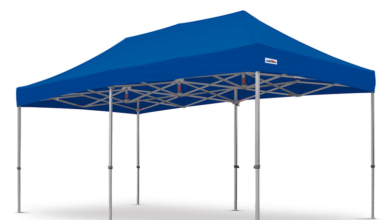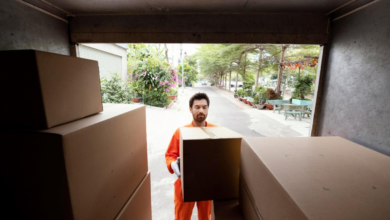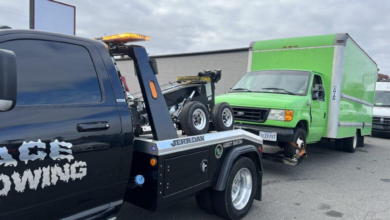
Dumpster Size Comparison for Different Types of Projects
Did you know that America generates 292.4 million tons of waste every single year?
Figuring out which dumpster size to rent for your project can be confusing.
You might not know how to compare dumpster sizes, or you might think that a smaller dumpster will be enough for your project. But if you don’t choose the right size, you could end up with a lot of wasted time and money.
But don’t worry. Keep reading and use this dumpster size comparison guide to figure out which dumpster size is best for your needs. We’ve compared the dimensions of different types of dumpsters so that you can easily find the one that’s right for your project.
Table of Contents
Most Common Dumpster Sizes
When it comes to renting a dumpster, there are a lot of factors to consider. But one of the most important is size. After all, if you rent a dumpster that’s too small, you may end up having to do multiple trips to the landfill – which will cost you more time and money. On the other hand, if you rent a dumpster that’s too big, you could end up paying for space that you don’t even use.
So what are the most common dumpster sizes? Here’s a quick rundown:
10-Yard Dumpsters
These are typically used for smaller projects like home renovations or yard cleanups. They usually measure about 12 feet long, 8 feet wide, and 3.5 feet tall.
What Fits in a 10-Yard Dumpster?
- 4 to 6 pick-up truckloads of trash
- 30-40 garbage bags
20-Yard Dumpsters
These are good for medium-sized projects like an office or retail store renovations. They typically measure 22 feet long, 8 feet wide, and 4.5 feet tall.
What Fits in a 20-Yard Dumpster?
- 6 to 8 pick-up truckloads of trash
- 60-80 garbage bags
30-Yard Dumpsters
This is the go-to size for most large projects, like residential construction site cleanups or major home renovations. They usually measure 22 feet long, 8 feet wide, and 6 feet tall.
What Fits in a 30-Yard Dumpster?
- 9 to 12 pick-up truckloads of trash
- 90-120 garbage bags
40-Yard Dumpsters
These are typically used for very large projects, like demolitions. They measure 22 feet long, 8 feet wide, and 8.5 feet tall.
What Fits in a 40-Yard Dumpster?
- 12 to 14 pick-up truckloads of trash
- 120-140 garbage bags
5 Things to Consider When Choosing a Dumpster Size
When looking to rent a dumpster, there are a few things you’ll want to keep in mind. They include:
1. The Type of Project You’re Working On
Are you working on a small home renovation? Then a 10-yard dumpster should suffice. But if you’re embarking on a large construction project, you’ll probably need a 30- or 40-yard dumpster.
2. The Amount of Waste You Have
Of course, the size of your project will play a role in how much waste you have. But it’s not the only factor. You’ll also want to consider the density of your waste. For example, construction debris is typically much heavier than household waste.
3. The Weight of Your Waste
As we mentioned, the density of your waste will affect how much fits in a dumpster. But weight is also important. After all, you don’t want to overload the dumpster and damage it – or worse, injure yourself.
4. The Size of Your Property
If you have a small yard, you might not have enough space to store a large dumpster. In that case, you’ll need to go with a smaller size.
5. Your Budget
Of course, you’ll also want to consider your budget when choosing a dumpster size. Larger dumpsters cost more to rent than smaller ones. But they can also save you money in the long run by preventing multiple trips to the landfill.
How to Prepare for Dumpster Drop-Off
Now that you know which size dumpster you need, it’s time to start preparing for its arrival. Let’s dive in:
1. Choose the Right Location
First things first: you need to choose the right location for your dumpster. This might seem like a no-brainer, but it’s more complicated than you might think. After all, the dumpster will be taking up a lot of space on your property. So you’ll want to make sure it’s not in the way of any foot traffic or obstructing any driveways or garage entrances.
You’ll also want to make sure the ground is level where you plan on placing the dumpster. If it’s not, the dumpster could tip over – which would be a disaster.
2. Gather Your Supplies
Once you’ve chosen the perfect spot for your dumpster, it’s time to gather your supplies. This includes things like tarps, saw horses, and plywood. You’ll use these items to create a base for the dumpster. This will help protect your property and make sure the dumpster doesn’t damage anything.
3. Clear the Area
Before your dumpster can be delivered, you’ll need to clear a space for it on your property. This means removing any debris, rocks, or other objects that could get in the way. Once the area is clear, you’ll be ready to have your dumpster delivered and start filling it up!
4. Create a Base
Now it’s time to create a base for the dumpster. First, lay down a tarp in the chosen spot. Then, set up your saw horses and plywood on top of the tarp. This will create a stable surface for the dumpster.
5. Place the Dumpster
Now that you’ve prepared the perfect spot for your dumpster, it’s time to place the dumpster itself. The first step is to make sure the dumpster is centered and level. This will help to prevent any accidents when you start filling it up.
Once you’re satisfied with the placement, you can begin filling up the dumpster with all of your unwanted junk. From there, all that’s left to do is sit back and relax, knowing that your garbage is now safely out of sight.
How to Fill a Dumpster
Now that your dumpster is in place, it’s time to start filling it up! But there are a few things you’ll need to keep in mind:
1. Don’t Overload the Dumpster
This might seem like common sense, but it’s very important. Overloading the dumpster can damage it – or worse, cause it to tip over. So make sure you don’t exceed the weight limit. Also, be careful not to overfill the dumpster. If the dumpster is too full, it will be difficult to close the lid and could result in waste spilling out.
2. Don’t Overfill the Dumpster
As anyone who has ever rented a dumpster knows, it is important to fill it up as much as possible to get the most bang for your buck. However, there is such a thing as too much of a good thing. Overfilling the dumpster can make it difficult to close the lid, which could result in debris spilling out.
In addition, excess weight can cause the dumpster to sag in the middle, making it even more difficult to close. And if debris does spill out, you may be required to pay extra fees. So when filling up your dumpster, be sure to leave some room at the top. Your wallet will thank you.
3. Fill the Dumpster Evenly
When it comes to filling a dumpster, even distribution is key. An imbalance of materials can cause the dumpster to tip over, which would create quite a mess. To avoid this potential disaster, be mindful of how you’re filling the dumpster. If you’re working with large items, place them in first and then fill in the gaps with smaller items.
This will help to create a more balanced load and prevent tipping when your dumpsters have weight limits. Of course, you’ll also want to make sure that you’re not overloading the dumpster beyond its weight limit. By following these simple tips, you can help to ensure a safe and successful dumpster-filling experience.
4. Use Proper Lifting Techniques
To lift heavy objects into the dumpster without injuring yourself or damaging the dumpster, it is important to use proper lifting techniques. First of all, be sure to brace yourself before you lift the object. Spread your feet shoulder-width apart and bend your knees. Then, grip the object firmly and lift it with your legs, not your back.
Once the object is in the air, be careful not to twist your body – keep it square to the dumpster. Finally, use your arms to guide the object into the dumpster, rather than throwing it in. By following these simple tips, you can ensure a safe and successful lifted object.
Want to Learn More About Dumpster Size Comparison?
Renting a dumpster doesn’t have to be complicated. Just remember to take into account the size of your project or construction sites when choosing a dumpster size. This dumpster size comparison guide should help you narrow down your options so that you can find the perfect-sized dumpster for your next project – whether it’s a home renovation, landscaping job, or anything in between.
Want to learn more? Check out our blog for more articles like this.








